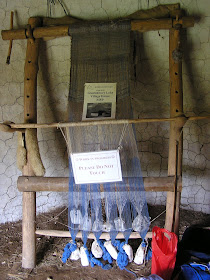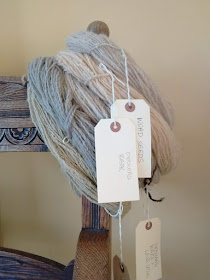One of the first things the budding fiction writer discovers is that, left to their own devices, characters will spend a lot of time standing around talking in the kitchen.
I don’t suggest they should be hanging off cliffs instead, but if they’re doing nothing but talk, their dialogue has to be of stellar quality to hold the reader’s attention. For those of us who aren’t Harold Pinter or Shakespeare, it’s helpful to give them something to do. Preferably something useful, because that’s another thing about fictional people – they never eat properly, look after their children or earn a living unless the writer makes them get on with it.
Obviously characters can’t be so burdened by the daily struggle that they have no time to fall in love or investigate murders or whatever the purpose of their existence might be. They do, though, need to be anchored in some way to the reality of the world around them. At least, mine do. All of which set me to wondering: what did ordinary people in the Roman Empire actually do all day?
It turns out that for very many women, life must have involved a great deal of this:
In order for families to be clothed, either somebody had to grow flax, or wool had to be coaxed from being sheep-shaped to being roughly the shape of a human. So in the interests of research, I purchased the drop spindle you see above, found some wool and got to work.
Several years on, Downie Towers is home to many bags stuffed with potential. Or, as Longsuffering Husband sees it, with wool in various half-finished stages of processing, along with a faint but all-pervading whiff of rural life.
Imagine his joy now that a new development has begun. From the limited evidence we have of ancient textiles, it’s clear that our ancestors loved to wear colour. Most of the samples that survive have turned dingy brown, but here's a 'before and after' photo from Vindolanda, on Hadrian's Wall.
Here are more of the glorious colours that can be produced by the use of natural dyes. They were on display alongside the Battle of Fulford tapestry, of which more in a moment:
Even our own garden, it turns out, is full of materials that can be used
to turn the pallid contents of the wool-bags into a splendid riot of
colour. Well, in theory. Below are some of the actual results. They've been tactfully
described by a visitor as “pastel”. Evidently dyeing, like spinning and—my next
project—weaving, is a complex skill as well as an art.
So, what did I learn from this attempt to give my fictional characters something useful to do?
- Nobody knows exactly what those Romano-Britons were making anyway. Precious scraps of fabric have been recovered here, but next to no textile garments (there is a very short woollen cape/hood from Orkney). Most of the few pictures that survive are on tombstones, so they're hardly likely to show people wearing their everyday working clothes.
- Wool and linen were the go-to fabrics of the day. The average Briton might dream of cotton and silk and even gold thread, but they'd be unlikely to wear them.
- Even for highly-skilled workers, the simplest of garments would have taken a very long time to create. Here's a video of the amazing amount of work that was involved in recreating one dress found in Denmark.
- After all this effort, clothes must have been valuable, and fabric used and re-used. This sock from Vindolanda seems to have started life as something else:
- Doing detailed work in lamplight must have been a terrible strain on the eyes. I guess that's why modern re-enactors often place weaving looms near wide-open doors to let the light in. That would be fine in the summer, but in winter, weavers must have faced a tricky compromise between being able to see what they were doing and having fingers that were warm enough to do it.
 |
| Loom at Butser Ancient Farm. Don't block the light! |
- Knitting as we know it was not a thing in Roman Britain, nor anywhere else at the time, but...
- Nalbinding – using a needle to create rows of knots – makes the cosiest socks ever. No wonder the Vikings and their ancestors used it. I’m not aware of any evidence for nalbinding in Roman Britain (if you are, please get in touch!) but that’s not to say it didn’t happen. Troops from many parts of the Empire served in Britannia and there must have been sharing of skills.
- The easiest way to get a wool garment of the colour you really really want is to really really want cream and brown.
- British children might have been running around in stripy socks like this one in the Ashmolean museum, but since wool doesn't survive well in our climate, we're unlikely to find out. Someone ‘knitted’ this on one needle (don’t ask me how!*) in Egypt in about AD 300-400. I like to think they enjoyed choosing those colours. For anyone who wants to join in, click here for some ideas on ways to recreate it. *LATER - Big thanks to Catherine Stallybrass who's confirmed that this too is Nalbinding - see comments below.
- The main thing I've learned from all this is enormous respect for the skills of our ancestors, and for the modern craftspeople who keep those skills alive.
 |
| Beautiful and practical: woollen braid created by Catherine Stallybrass |
 |
| Part of a wonderful modern tapestry showing the Battle of Fulford |
The Fulford Tapestry is a fantastic project that began in 2000. You can see the whole of the finished tapestry, and how it was made, at their website.
Meanwhile back at Downie Towers,the best that can be said is that we’re well on the way to producing Fifty Shades of Beige.
There is a strange pleasure in doing something like this even though the end product rarely lives up to the early vision. Because the past is not only brought alive by reading words, visiting places and seeing exhibitions. Sometimes we make connections across time by doing.
Ruth Downie writes murder mysteries featuring Roman army medic Ruso and his British partner Tilla, who is unfortunately far less interested in woolwork than her author.
Find out more at www.ruthdownie.com




































